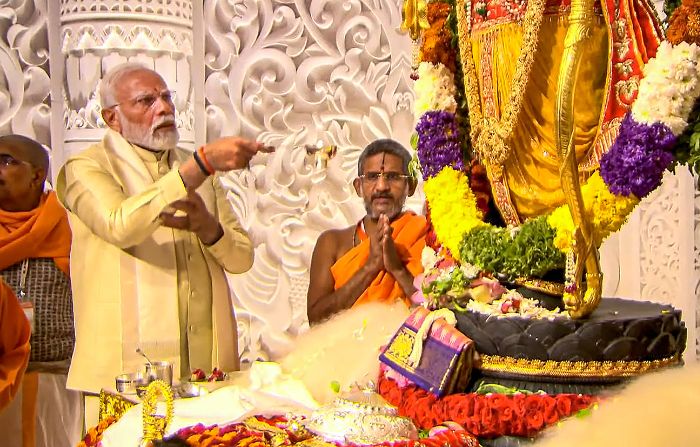- Tuesday, April 22, 2025
The Ram temple is estimated to attract nearly 100 million tourists a year, according to analysts at Jefferies.

By: Shubham Ghosh
INDIAN prime minister Narendra Modi inaugurated the much-awaited Ram temple in the northern holy town of Ayodhya and it might not be the end in the list of high-profile inaugurations even if his critics claim that such acts are aimed at reaping dividends in elections.
The government led by Modi has been spending millions of dollars to develop many other temples to not only appeal to the majority community ahead of electoral tests but also boost tourism that can enrich state coffers.
Apart from a makeover of Ayodhya worth $6 billion (£4.7 billion), the federal government has spent almost $120 million (£94.2 million) to develop several other Hindu pilgrimage sites in the past decade, according to government data and more funding is planned.
Read: January 22, 2024, just not a date but a start of an era: Modi
The Ram temple, which has been erected on the site of a Mughal-era mosque that was razed by angry Hindu activists in December 1992 and where Hindus believe Lord Ram was born, is estimated to attract nearly 100 million tourists a year, according to analysts at Jefferies.
In comparison, about nine million people visit Vatican City annually and about 20 million to Mecca.
Read: Ram Lalla idol ‘opened’ for the world as Modi leads Ram temple consecration
“The creation of a new religious tourist centre (Ayodhya) with improved connectivity and infrastructure can create a meaningfully large economic impact,” the analysts wrote in a note, Reuters reported.
Since Modi inaugurated the Hindu pilgrimage site of Kashi Vishwanath Corridor on the banks of the Ganges in 2021 in Varanasi, his constituency in Uttar Pradesh, more than 130 million tourists have visited the area, according to government data.
The yearly footfall in Varanasi, which is also one of the oldest living cities in the world, was barely seven million before that.
According to analysts, tourism income for locals and hotels in Varanasi – by dying where Hindus believe to attain salvation and freedom from the cycle of birth and re-birth – have surged by up to 65 per cent.
With nearly $200 billion (£157 billion) in revenue, tourism contributes about seven per cent of India’s economy, which is below most large emerging and developed economies by up to five percentage points.
The new temple and renovations of many others are likely to greatly boost the electoral prospects of Modi’s ruling Bharatiya Janata Party, which is widely expected to win a rare third straight term in general elections due by May.
Monday’s inauguration of Ram temple fulfilled a decades-old election pledge of the Hindu nationalist party.
“With today’s event, definitely the momentum is with the BJP,” political commentator Sandeep Shastri was quoted as saying by Reuters.
“It may be fair to say that any political party would like to make the best of a situation they find themselves in, and the BJP seems to have mastered the art of managing the message.”
Out of the 46 projects funded under the tourism ministry’s “Pilgrimage Rejuvenation and Spiritual Heritage Augmentation Drive” since Modi came to power in 2014, only about half a dozen are Muslim or Sikh sites.
Muslims account for about 14 per cent of India’s population of 1.42 billion, most of them Hindus.
(With Reuters inputs)